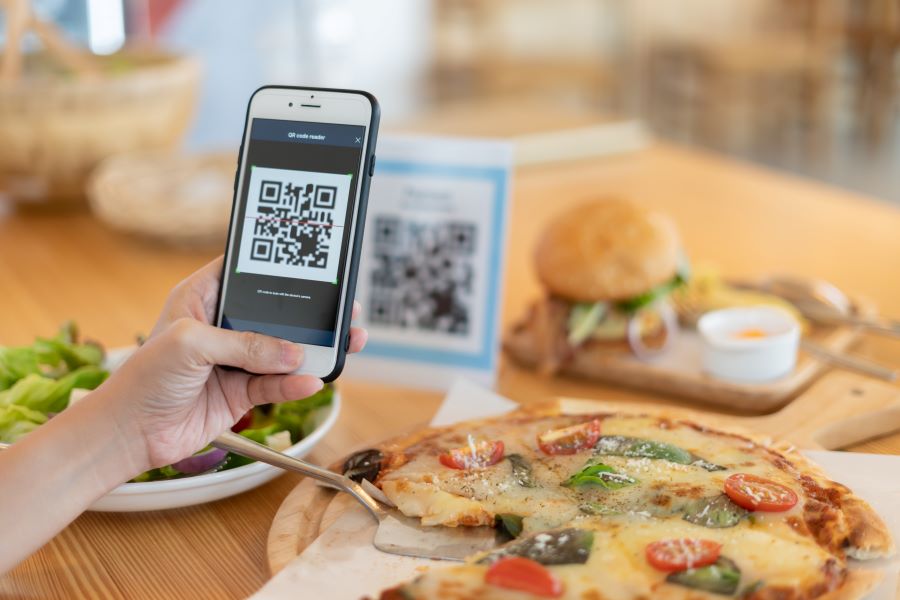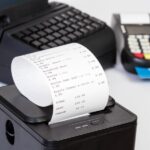You have two options when offering receipts in your business: digital or paper. Each has advantages and disadvantages, with legal requirements playing a role in decision-making.
Digital receipts offer several benefits. First, they are environmentally friendly, reducing the use of paper and decreasing waste during production. This is especially important as thermal receipt paper contains harmful chemicals and contributes to solid waste and environmental issues. Second, digital receipts can be easily stored and organized for future reference, eliminating the need for piles of physical receipts. Third, they can be quickly and easily emailed to customers, providing a convenient and efficient way to receive proof of purchase and payment.
For online businesses, digital receipts are almost a necessity. They can be automatically generated and sent to customers’ email addresses, reducing processing time and saving resources. Additionally, digital receipts can be easily linked to transactions and virtual file folders, simplifying tax season and financial record-keeping.
However, for brick-and-mortar businesses, there are considerations to keep in mind. Some customers may still prefer physical receipts for warranty purposes or personal record-keeping. Additionally, legal requirements may mandate the provision of paper receipts in certain situations.
Ultimately, the decision to offer digital or paper receipts should be based on your business needs, customer preferences, and legal obligations. It may be worth considering a hybrid approach, offering both options to cater to a wider customer base.
Why shops are moving away from paper receipts
Shops are increasingly moving away from paper receipts for several reasons, including health and environmental concerns associated with thermal receipt paper. Traditional paper receipts are typically made using thermal receipt paper, which contains a harmful chemical called bisphenol A (BPA).
BPA has been linked to numerous health issues, including hormone disruption and potential developmental problems. Shop workers who handle these receipts daily are at risk of exposure to BPA, which can adversely affect their health. Customers who handle paper receipts may also be exposed to this chemical.
Another downside of paper receipts is their impact on the environment. Thermal receipt paper cannot be recycled due to the BPA coating, leading to significant waste. Additionally, the production and disposal of paper receipts contribute to deforestation and other environmental issues.
In contrast, digital receipts offer a more sustainable alternative. By switching to digital receipts, shops can eliminate the use of thermal receipt paper and the associated health risks. Digital receipts also reduce waste and help conserve natural resources.
Moreover, digital receipts are more cost-effective and convenient. They can be easily generated, stored, and organized electronically, eliminating the need for physical storage and reducing administrative costs. Digital receipts can be quickly and securely emailed to customers, providing instant proof of purchase and significantly reducing paper consumption.
In conclusion, the shift away from paper receipts is driven by the health risks of BPA exposure and the environmental impact of paper waste. Digital receipts offer a more sustainable, cost-effective, and convenient alternative for both shops and customers.
Maintaining privacy and GDPR with digital receipts
Maintaining privacy and complying with GDPR is paramount when implementing digital receipts. The General Data Protection Regulation (GDPR) is a legislation that sets out guidelines for the protection of personal data and the privacy of individuals within the European Union.
When requesting personal contact details for receipt, businesses must collect and handle this information securely and lawfully. It is crucial to obtain explicit consent from customers to use their contact information, and the purpose for which it will be used must be clearly stated. Businesses should only collect the information required for the receipt and avoid unnecessary data processing.
To protect customer trust and ensure data protection, businesses should implement strategies such as:
1. Transparency: Communicate to customers how their data will be used and stored. Please provide them with an easily accessible privacy policy and consent options.
2. Data Security: Employ robust security measures to protect customer data from unauthorized access or breaches. This includes implementing encryption techniques, regularly updating security systems and training staff on data protection practices.
3. Purpose Limitation: Only collect personal data for specific, legitimate purposes related to issuing digital receipts. Avoid using this information for marketing or other purposes without explicit consent.
4. Secure Storage: Store customer data securely and protect against loss, theft, or unauthorized access. Implement strict access controls and regularly review data storage practices.
By adhering to GDPR guidelines and implementing strong privacy and data protection practices, businesses can build customer trust and confidence in using digital receipts while safeguarding personal information.
How receipts impact queues and checkout efficiency
Receipts significantly impact queues and checkout efficiency, impacting businesses and customers. While paper receipts have long been the traditional choice, digital receipts are gaining popularity for their convenience and eco-friendliness.
Paper receipts require minimal effort to print, allowing for a swift checkout process. Cashiers can swiftly print and hand out paper receipts, serving more people in less time. Customers can grab their receipts and move on, reducing queues and improving efficiency.
On the other hand, digital receipts require customers to provide their contact information, leading to delays and awkward encounters at the checkout. These receipts often require the customer’s email address to be entered manually, slowing down the process and creating bottlenecks.
Businesses are adopting mobile wallets and automatic receipt generation solutions to address these challenges. Mobile wallets store customers’ payment and contact information, allowing for seamless receipt delivery without manual input. Automatic receipt generation eliminates the need for customers to provide their information at the checkout, speeding up the process and minimizing queues.
In conclusion, choosing between paper and digital receipts depends on the business’s and customers’ priorities. While paper receipts offer quick printing and distribution, digital receipts are more convenient regarding future reference and environmental impact. Technology such as mobile wallets and automatic receipt generation can further streamline the checkout process and improve efficiency.

Implications for business accounting
Regarding business accounting, digital receipts offer numerous advantages over paper receipts. By offering digital receipts to customers, businesses can streamline their accounting processes and improve efficiency.
One major benefit is the ease with which digital receipts can be submitted to cloud accounting systems. With a few simple clicks, digital receipts can be seamlessly integrated into these systems, eliminating the need for manual data entry. This saves time and reduces the risk of errors that can occur during manual input.
Moreover, businesses can digitize their existing paper receipts using scanning or photo apps. These apps allow users to take a picture of the receipt, which is then converted into a digital format. This eliminates the need to physically store and organize paper receipts, reducing clutter and improving accessibility.
Another advantage of digital receipts is the potential for machine learning recognition. This technology can automatically categorize expenses based on the information provided in the receipt. By implementing machine learning algorithms, businesses can save time and effort previously spent on manually categorizing expenses.
Overall, offering digital receipts has significant implications for business accounting. From integrating with cloud systems to simplifying receipt management and introducing machine learning recognition, digital receipts provide a more efficient and accurate way to handle accounting processes.
What should you do in your business?
When deciding whether to offer digital or paper receipts in your business, there are several factors to consider. One crucial consideration is customer preference. While digital receipts offer convenience and ease of organization, some customers may still prefer paper receipts. It is important to give customers the option to choose their preferred receipt delivery method to ensure their satisfaction.

Only providing digital receipts can have negative implications for your business. Some customers may not have email access or prefer to maintain physical copies of their receipts for future reference. By limiting the receipt options, you risk alienating customers and potentially losing their business.
Both digital and paper receipts have their pros and cons. Digital receipts are more environmentally friendly, as they reduce paper waste and the environmental impact of printing receipts. They also offer the advantage of easy integration into cloud accounting systems and the potential for machine learning recognition. However, digital receipts may require customers to provide their email addresses, which can be a privacy concern for some individuals.
On the other hand, paper receipts provide physical proof of payment and are not dependent on email communication. However, they contribute to solid waste production and may require additional resources for printing and storage.
When making this decision for your business, it is vital to weigh the preferences of your customers, the environmental considerations, and the potential impact on your profit margins. Offering digital and paper receipt options can be a good compromise that meets the needs and preferences of all your customers.


